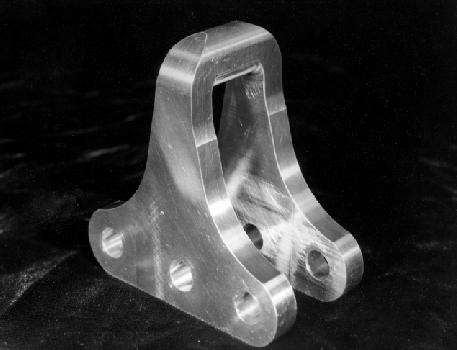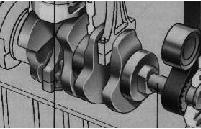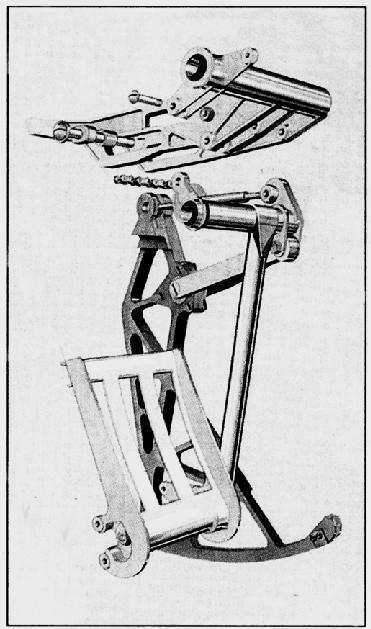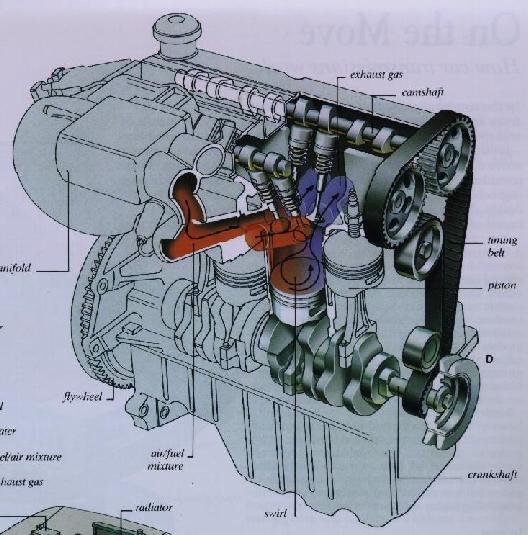
|
| Figure 3.7: This photograph of a metal object shows the anisotropic reflections and the white edge highlights which illustrators sometimes depict. |
Shading in technical illustration brings out subtle shape attributes and provides information about material properties, as shown in Figure 3.9. Most illustrators use a single light source and technical illustrations rarely include shadows. In most technical illustrations, hue changes are used to indicate surface orientation rather than reflectance because shape information is valued above precise reflectance information. Adding a hue shift to the shading model allows a reduction in the dynamic range of the shading, to ensure that highlights and edge lines remain distinct. A simple low dynamic-range shading model is consistent with several of the principles from Tufte's recent book [36]. He has a case study of improving a computer graphics animation by lowering the contrast of the shading and adding black lines to indicate direction. He states that this is an example of the strategy of the smallest effective difference :
Make all visual distinctions as subtle as possible, but still clear and effective.
Tufte feels that this principle is so important that he devotes an entire chapter to it in his book Visual Explanations. Tufte's principle provides a possible explanation of why cross-hatching is common in black and white drawings and rare in colored drawings: colored shading provides a more subtle, but adequately effective, difference to communicate surface orientation. Based on observing several illustrations, surfaces with little or no curvature are generally flat or Phong-shaded in technical illustrations. Surfaces which have high curvature are shaded similar to the Phong shading model or are cool-to-warm shaded as in Gooch et al. [15], unless the surface has a material property such as metal. Illustrators apply different conventions to convey metallic surface properties, especially if the object has regions of high curvature like an ellipsoid. In the next chapter I will discuss the algorithms used for shading in computer graphics and why it is inadequate for technical illustration. I will also discuss the shading algorithms used by Gooch et al. for matte and metal objects.

|
| Figure 3.7: This photograph of a metal object shows the anisotropic reflections and the white edge highlights which illustrators sometimes depict. |

|
| Figure 3.8: Illustrators sometimes use the convention of white interior edge lines to produce a highlight [25]. |


|
| Figure 3.9: Illustrators combine edge lines with a specific type of shading. Shading in technical illustration brings out subtle shape attributes and provides information about material properties. Left: Compare this shaded image of airplane pedal to the line drawing in Figure 3.2. Copyright 1989 Macdonald & Co. (Publishers) Ltd. [25]. Right: Engine. Courtesy Macmillan Reference USA, a Simon & Schuster Macmillan Company [28]. |